

 Raise your glass. To those before us who made beer out of necessity
Raise your glass. To those before us who made beer out of necessity
and to those among us who have turned it into a form of art.
To home and travel. Without them, the beauty of cooking and beer
would never have had the chance to inspire me. 
CONTENTS


Make what you eat, eat what you love, and
enjoy beer and food that inspire you.
People who enjoy cooking have a lot in common with craft beer lovers. Both are inspired by new food and drink experiences.
The reward of discovering an enjoyable food or drink is well worth the small risk of trying it and not liking it. We smell, analyze, bite or sip, compare it to funny things like grass and ocean breezes, and then bite and sip again. I expect this is how my love of fresh, simple food evolved into an equal fondness for well-crafted beer. They each have humble beginnings that, with the right touch, can be turned into things so appetizing that we struggle for the words to describe them. These commonalities are why beer not only works with food, beer works in food. Its a true joy any time we get to have both.
If you havent considered using your favorite beers in the foods you cook, this book provides you many opportunities to broaden your horizons beyond the realm of chocolate stout cake and beer can chicken. Beer can truly step up your game in the kitchen, and it does so in unexpected ways. The grassy, floral hops in an IPA adds a citrus punch to salad dressings. A fruity, pucker-inducing sour beer makes one tasty strawberry muffin. Beer can be used in recipes for any meal (see the brunch chapter!) and in any course of a meal. This book is meant to take two works of art and combine their best qualities to make something unforgettable.
Beer education and cooking know-how can sometimes feel overwhelming, but if you persist your results in the kitchen will surprise you. Combine them and its a recipe for pure fun. So kindly ask any undeserved lingering snobbery that surrounds craft beer and fine food to step out for a while, or better yet, for good. Food on Tap is an accessible guide for cooking with craft beer that I hope will spark a creative curiosity to keep you hopping from the brewery back to the kitchen.

I like to think of cooking and baking as an ideal marriage between art and science. The partnership has its challenges, but the relationship is always worth it in the end.
The same analogy can be used for craft beer: its an artisanal product that has a foundation in science. When you bring beer into the art of cooking you pull even more science into the mix, which sometimes complicates the relationship. But once you know some basic rules and combine that knowledge with your understanding of beer styles, cooking with beer will come naturally. Youll soon gain the confidence to do some experimenting of your own.
TIPS FOR SUCCESSFUL COOKING AND BAKING WITH BEER
Ive learned a few things over the years by using more and more beers and beer styles in my recipes. You may find the following observations to be helpful guides for how you approach things in your own kitchen.
Relax, its hard to mess up. Beer is a pretty resilient ingredient. Yes, there is a thing or two you can do that will ruin a bottle, and well cover those. But overall, while preparing a dish I find that when I add the beer, what beer I add, and the ideal beer temperature is surprisingly flexible. So relax. If you make a mistake with a recipe, there is a good chance you will still have success in the end.
You can use chilled beer (sometimes). One tricky thing about cooking with beer is whether you should use room temperature beer or if its okay to grab a bottle from the fridge. This is especially tricky if a recipe uses just a few ounces. I expect, like me, youd prefer to drink the rest of that freshly opened beer instead of allowing the entire bottle to get to room temperature and go flat. Lets start with room temperature beer. In general, it will work with all recipes.
Its especially important to use room temperature beer in bread and pastry recipes that use yeast or that need to rise. The yeast in the dough and any yeast active in the beer need a warm, cozy environment to do their thing. Avoid chilled beer for these recipes. Otherwise, chilled beer gives successful results. Grab the beer out of the fridge when you get started, though, so its chilled and not ice-cold. Also remember that a chilled beer may influence cooking times.
For example, if you pour a chilled beer into a soup or stew at the final step, it will take extra time for it to heat back up to serving temperature. Less fizz is best, but the foam wont cause you to fail. Its usually best to pour your beer into the measuring cup and let the head settle before adding it to your recipe. This helps prevent excess foaming and spills that can happen when it hits the other ingredients. That being said, you dont want the beer to be completely flat, as in, it sat open in the fridge for a few days. That carbonation has a leavening role in many recipes, so you need to give the fizz just enough time to calm down before you use it.
This isnt the case for every single recipe, but for the sake of consistency, measure the beer five minutes or so before you need it. If you forget, dont panic. You can add it from the bottle, just be aware that you might need to lower the temperature of the burner for a minute to prevent the beer from foaming over the side of the saucepan. Use flavor as your guide. Before you set out to use beer in a recipe, drink it. Note its aroma, its initial flavors, and its lingering impression on your tongue.
If it brings a food to mind, chances are it would be a nice beer to use in making it. This is why I love using chile beers in corn bread and salsa, and pale ales in salad dressings. You might find a smoked porter to be a better match for your corn bread and an IPA for your dressing. Simply put, experiment! Break the rules. If you knew me well, you would gasp at the sight of this one in my list. Im not one for the saying, Rules were made to be brokenexcept when it comes to the rules regarding cooking and baking with beer.
Some of those rules, for example, are that a stout is the best fit for a chocolate cake, and hoppy beers should be avoided because they turn bitter. I can give you a list of five beers that work as well or better in a chocolate cake than a stout. Yes, a hoppy IPA with IBUs of 75 may turn bitter when its boiled or baked at high heat, but since when has well-balanced bitterness in good food been a bad thing? Its okay to nudge the gate open and try something new. (By the way, IBUs stands for International Bitterness Units. If you happen to be unfamiliar with the measure, dont worry. We discuss it further in chapter 2.) Sometimes less beer is better.
This book gives you options to cook with beer for most meals and every course of the meal. That doesnt mean I would encourage you to use beer in every dish on the table. When used in food, beer is complex and direct. What tastes excellent at the start of a meal might wear out your taste buds by the end. Pick and choose beer-infused dishes to blend with and complement other foods. On the same note, some of these recipes pair wonderfully with beer to sip while you eat.
Next page

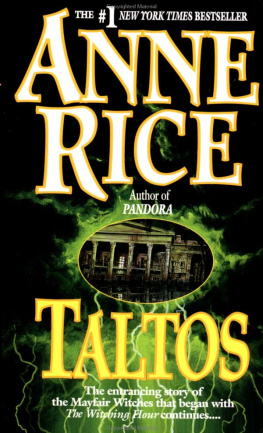
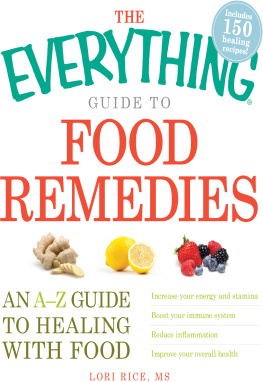



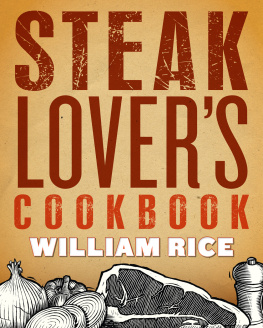
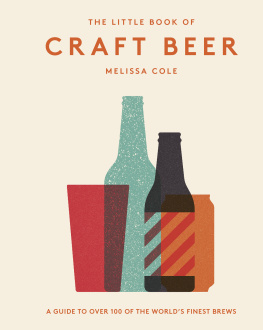
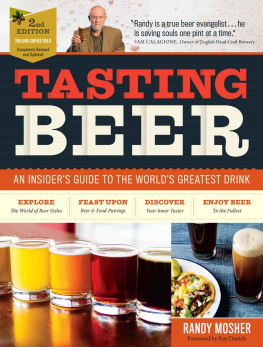
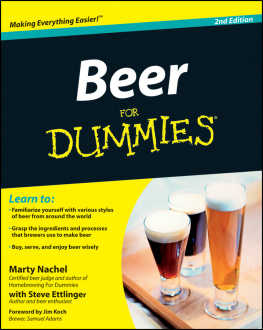
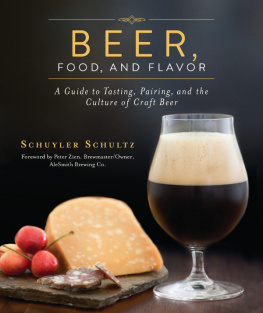
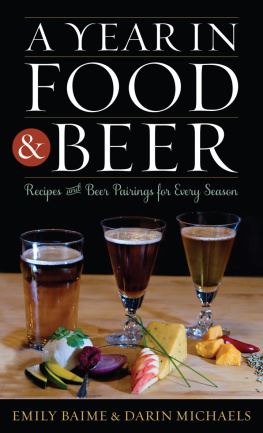
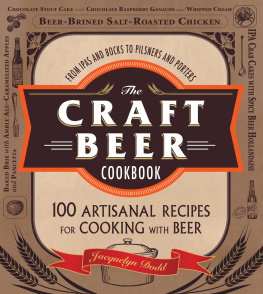


 Raise your glass. To those before us who made beer out of necessity
Raise your glass. To those before us who made beer out of necessity

